在第30届Computex展会的南港展示大厅里,全屏平板电脑设备几乎充斥每一个角落。但是它们大多数被放置在玻璃箱里——诱人、外表光滑且让人想接近,给好奇的游客们留下无数对产品可用性、重量、触感体验和实用性能的悬念。
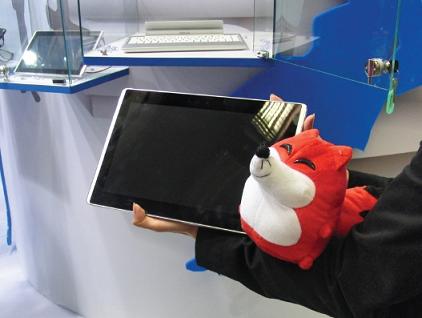
图说:Computex上平板电脑图片:即使在它不工作的时候,它仍然看起来很可爱。
根据这些提供给普通大众的平台来判断,这些新的解决方案很可能是直接来源于在Computex和台湾的设计经验中占主导地位的PC产业链:Windows或Linux操作系统、英特尔的Atom处理器、内置摄像头,大量的I/O接口,以及与现有的笔记本电脑和上网本相同的电池寿命。
有些被展出的平板电脑提醒参展游客,尽管有着迷人的新外形参数,PC体验将困扰这些平台的早期采用者。与此同时,在专用功能的消费电子产品的推出已经提高了门坎的环境下,另一个考虑因素已悄悄纳入衡量标准。
{pagination}
消费者现在开始面对功能有限的解决方案, 针对这些新设备的规格说明事实上给出的是用户自定义的参考值。例如,当购买一个MP3播放器时,消费者会认为参考存储容量的数字指的是可以用于存储歌曲的空间。如果是一个电子阅读器,可用存储空间是指用户未来可以存储多少书籍或文件。
但在通用PC架构下,不能用存储容量来定义容量规格。当你购买一台一台配置有256G硬盘驱动器的笔记本计算机时,这个256G指的并不是提供给用户的空间; 相反,它指的是用户将和操作系统、必要的系统工具、用户购买的应用程序和1,000个针对用户永远都不会安装的打印机的驱动程序一起共享的空间。
标明用于主存储器的容量可能有几G,但和那些被OS和必要的公用程序所占用的存储器空间一样,却没有对这几G存储空间中会被用户数据和应用程序所占用的那部分存储空间加以说明。
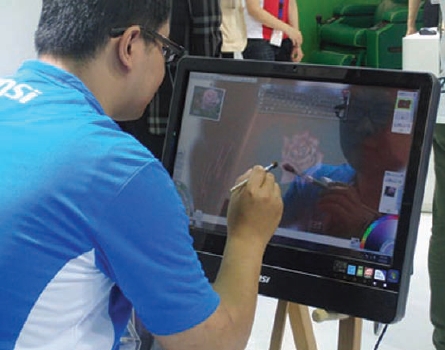
图说:这个画家的画布是一个分辨率极高的电脑显示屏,而屏幕的角落里是一个很棒的调色板。画家使用手中的画笔在屏幕上这个虚拟调色板上“蘸取”色彩,并且调整色彩和线条。
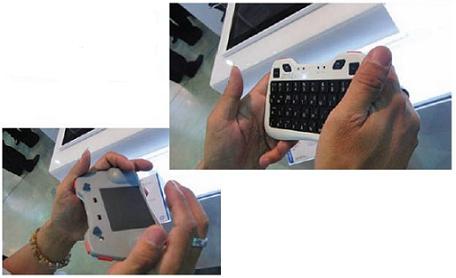
图说:随着触控显示产品的兴起,用惯了全键盘和传统智能手机拇指键盘的我们感觉到有些吃力。现在一个小玩意儿就解决这个问题。它的一面是全功能的拇指操作键盘;而另一面则是一个全功能的触摸控制板。这是很好的无线应用产品。
{pagination}
显然,Computex 2010毫无疑问的过早考虑了在特定应用、以消费者为中心的解决方案的领域中PC技术的应用。这些产品尚未迎来黄金时间,但那些在世界各地的有天赋和能力的团队,其为这产业链开发芯片、显示器、电源,以及尤其是软件,肯定会响应这被其称为所谓的市场机会。
在Computex上,我偶然发现一个摄影师将镜头对准了一款新平板电脑。当你需要添加道具以使画面变得有趣时,它能说明一切。
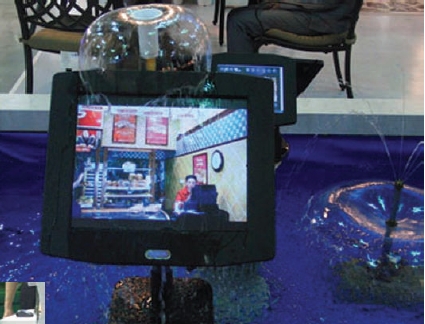
图说:毫无疑问,这是在某些地方使用的一种应用。但是,为了展示防水显示器的优势,计算机和操作者岂不是都必须被海水淹没吗?
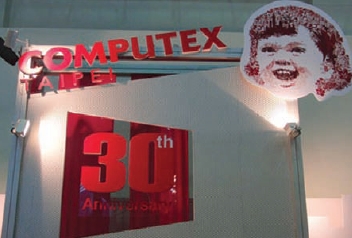
图说:全国计算机会议(National Computer Conference)和电脑经销商博览会(Comdex)浮现在脑海中,历经30年,本身就是非常了不起的成绩。谁曾想到,中国海岸一个小小的岛屿能够成就这样一个辉煌的舞台?显然地,其中一些工作有着独特的价值。
下一页:参考原文(Plenty of tablets to ogle at Computex, but few to touch)
《电子工程专辑》网站版权所有,谢绝转载
{pagination}
Plenty of tablets to ogle at Computex, but few to touch
Full-screen tabletlike devices could be found in every corner of Nangang Exhibit Hall at the 30th annual Computex show here. But many were encased in glass enclosures, tempting, sleek and inaccessible, leaving curious visitors with lots of unanswered questions about the units’ usability, weight, tactile experience and utility.
Judging by the platforms available to the general public, the “new” solutions are mostly direct derivatives of the PC ecosystem that dominates Computex and Taiwan’s design experience: Windows or Linux operating systems, IntelAtomCPUs, integrated cameras, lots of I/O ports, and proposed battery life in the same range as that for existing notebooks and netbooks.
Some examples reminded exhibit visitors that despite the sexy new form factor, the “PC experience” will haunt these platforms’ early adopters. Meanwhile, in a world where the introduction of function-dedicated consumer products has raised the bar, another consideration has crept into the measurement criteria.
Consumers have now been exposed to solutions that perform limited functions, and the specifications for those new tools actually reference value in a user-defined context. For example, when purchasing an MP3 player, the consumer expects the figure that eferences storage capacity to mean the space usable for storing songs. In an e-reader, available storage space refers to how many books or documents the user can store for future consumption.
But in the general-purpose PC architecture, capacity specs are not defined by ctivity. When you purchase a notebook with a 256-Gbyte hard drive, that number does not indicate the space that is available to you; rather, it references the total amount of space that you will share with the operating system, the required system utilities, your purchased applications and a thousand drivers for printers that you will never install.
The figure provided for main memory capacity could be in the multiple gigabytes, but the amount of that memory that will be occupied by your data and applications, as opposed to that used by the OS and required utilities, is unstated.
Clearly, Computex 2010 has to be considered early days for the deployment of PC technology in the realm of application-specific, consumer-focused solutions. The products are not ready for prime time, but the talent and energy of the teams around the world who develop silicon, displays, power supplies and, especially, software for this ecosystem will certainly respond to the market opportunity that has been defined by their competition.
While at Computex, I chanced upon a photographer staging a shot of a newTabletPC. When you have to add props to make the picture interesting, that sort of tells the whole story.
·A 30-year run is quite an achievement; the National Computer Conference and Comdex come to mind. Who would have guessed that an event staged on a little island 100 miles off of the coast of China would endure and prosper? Clearly, there is some unique value at work.
·no doubt, there’s an app for this somewhere. But to take advantage of a water-resistant display, wouldn’t the computer and the operator both have to be underwater too?
·This painter’s canvas is a very high-resolution PC display with a palette tucked in the corner. The artist touches his brush to a color on the palette and then transfers the color to the virtual surface of the display, applying strokes appropriate to the desired texture.
·With all of the interest in touch displays, slates and tablets, those of us trained on full-size keyboards and even smartphone thumb keypads are feeling left behind. Along comes a gadget that bridges the gap. On one side is a fully functional thumb-operable keypad...
·...and on the reverse is a full-function touchpad. Now that’s a really good use of wireless (Bluetooth, in this case).